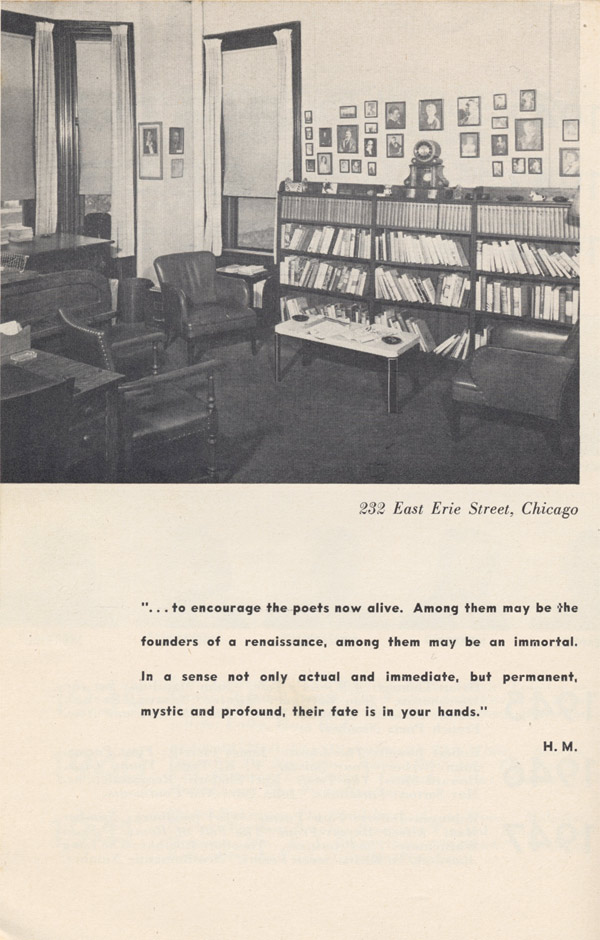
In October 1917, on Poetry’s fifth anniversary, Harriet Monroe looked back at the founding of the magazine while acknowledging that the “second period of our history” had begun. The “five-year endowment” that had financed Poetry had run its course, and Monroe wondered if, in a time of war and economic upheaval, there was still a place for the magazine in American art and culture. “Poetry may not be a grand enough portal,” she wrote, “and the lamps that light it may burn dim in drifting winds; but until a nobler one is built it should stand, and its little lights should show the way as they can.” Of course, the magazine survived—on the tenth anniversary, Monroe was looking forward to finding “abler minds and even more liberal auspices” that could sustain it well into the future—and subsequent anniversaries have been marked in a variety of ways. The sixtieth anniversary issue, for example, focused on the first appearances of poets long associated with Poetry, including James Dickey, Elizabeth Bishop, and John Berryman. The most visually striking memorial can be found in the thirty-fifth anniversary issue, which contained a Poetry timeline paired with photographs of contributors and ending with the following image of the soon-to-be vacated Erie Street office. In the accompanying essay, “543 Cass Street,” co-editor Marion Strobel reflected upon how the office had become a museum to Monroe, who had died in 1936:
Work goes on at her desk; many of the same photographs, the “poets gallery” which she herself hung in the Cass Street office, pepper our present walls; her Louis xvi clock, accurate as ever, still ticks time, and still, as then, we pay no attention to it.
In Monroe’s time, as now, the editors knew that, as Strobel wrote, “yesterday’s poet, whom we love, is not the one we are looking for.”
Paul Durica is a graduate student at the University of Chicago and the founder of Pocket Guide to Hell Tours and Reenactments.


